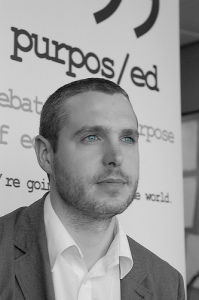TB872: Institutions, structures, and power
Note: this is a post reflecting on one of the modules of my MSc in Systems Thinking in Practice. You can see all of the related posts in this category.

One of the useful things about this module so far is the clarity around terminology. For example, take the following around the difference between ‘organisation’ and ‘structure’:
Many accounts say organisations are the product of acts of organising. This implies human agency and design. The term is, however, common in biology, thus reflecting what might be described as evolutionary ‘organising’ through drift and natural selection. We will say that organisations (the noun) are products of the action or process of organising, ordering, or putting into systemic form; the arrangement and coordination of parts into a systemic whole. Organisations thus contain processes, elements (often institutions) and structures.
Structures are not the same as organisations, as one can change without affecting the other, for example the cells in our body parts. While we live their organisation (the relations between the parts) is conserved. For example, in the post-COVID-19 world, have nation states begun to change organisations, structures, both or neither?
Organisations can pursue a purpose which might be understood as an emergent property of both relationships between elements (i.e. patterns of organisation) and elements, including institutions and structures. It is thus feasible, in theory at least, to agree some discernible purpose for organisations like a ministry, a finance department, a company, a mutual or the Roman Catholic Church. Many organisations, of course, lose track of their purpose or pursue purposes that may no longer be viable or useful to a society.
(adapted from Ison and Straw, 2020, as cited in the module guide)
I had a bit of a conversation with ChatGPT about this to think about different metaphors. Of the different options (music, theatre, gardens) I preferred the forest analogy, and asked it to create an image using DALL-E which I included at the top of this post. The left half of the image shows the forest as a vibrant ecosystem, symbolizing the organisation, while the right half focuses on the physical layout of the forest, representing the structure. The idea is that the image captures the idea of how an organisation maintains its essence despite changes in its structure.
Therefore:
- Organisation can be thought of as the forest ecosystem as a whole, including all of the trees, plants, animals, as well as the interactions between them. Not only that, but the forest ecosystem as ‘organisation’ can be thought of as the overall system: its health, diversity, and functionality. The organisation/ecosystem’s balance and survival depend on these relationships and processes.
- Structure is like the physical layout of the forest. Trees are planted, paths are laid out, and different areas of the forest are segmented (e.g. dense planting vs clearings). This ‘structure’ can change over time by new paths being made, areas cleared, or trees planted, without fundamentally altering the forest as an ecosystem. This is similar to how, in an organisation, the ‘structure’ refers to how various parts are arranged (e.g. departments, teams) which can change without altering the core purpose and identity of the organisation.
The module guide suggests that systems thinkers need to understand whether they’re trying to change the organisation or the structure (and whether it’s structure or organisation that is getting in the way of change). For me, this is really interesting, as ‘organisational structure’ usually conflates these two aspects.
New leadership in a company or institution with a hierarchical approach usually leads to changes in structure, when actually perhaps what they need is a change in organisation. Lots to think about here.


